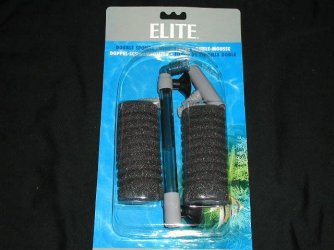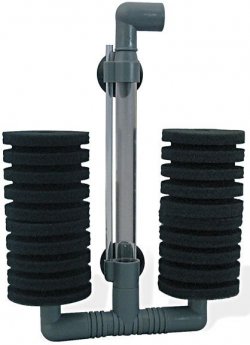NewFishPerson
New Member
- Joined
- Oct 3, 2017
- Messages
- 27
- Reaction score
- 2
Hi,
Just recently got hold of my first ever fish tank! it was completely free because it leaked like a sieve, I used black marine safe silicone from my neighbor to repair the seals after reading and watching online articles about how to restore a tank. I've had it sat outside in a shed and it has held the water perfectly for a couple of weeks now, my reseal job looks fairly good so I'm confident the seals will hold. I've repaired the light fixture and installed a new lighting ballast, it now has a tri-phosphor 18w T8 6500K tube in there. The tank dimensions are W32" x D12" x H15" which roughly equates to 25 US gallons.
I purchased a freshwater liquid test kit and a few chemicals in preparation for cycling the tank. My pH is 7.9 after letting the water sit for a few days - I live in a hard water area. What fish would be appropriate for the size of tank and the water I have? I originally wanted to keep Tetras but I've read they'll die off in my water. My fish keeping experience is limited to watching YouTube videos and reading articles in other words, I'm a beginner! I do know about cycling; getting ammonia and nitrite to drop to zero in 12h before adding fish so no worries there, I have plenty of time to wait.
in other words, I'm a beginner! I do know about cycling; getting ammonia and nitrite to drop to zero in 12h before adding fish so no worries there, I have plenty of time to wait.
I plan to have a few live plants - namely Java Fern, Java Moss and Anubias nana on driftwood. Would the 18w T8 be sufficient for these plants? I've read that they are all low light plants, but I want to be sure that the lighting is good enough as I could change the lighting before I seal the ballast in the lid.
The tank came with a heater, its an Ebo Jager heater 125w and it seems to work perfectly. It got the tank up to temperature in a couple of hours and has held it there steady whenever I've measured it. Is it worth replacing this as I have no idea how old this is or are they generally reliable?
I'd also like to paint the back glass pane black to make the aquascape more visually appealing. Is there a particular type of paint that is recommended to do this? Ideally one that can be removed without a great deal of effort is preferable in case I ever decide to change the background.
Last question is about filtration.. What would be the best type of filter to go for in this tank? The person I picked the tank up from said he was using a small external filter before the tank sprung a leak, he gave me an internal filter which he said probably wouldn't work - he was correct. I did try replacing the impeller however it just vibrates on the impeller shaft and doesn't pump water. Ideally the new filter needs to be quiet, easy to clean while doing the job of keeping the water healthy. External or internal is fine, I have no preference as long as it does the job.
Sorry for all of the questions
Thanks
Just recently got hold of my first ever fish tank! it was completely free because it leaked like a sieve, I used black marine safe silicone from my neighbor to repair the seals after reading and watching online articles about how to restore a tank. I've had it sat outside in a shed and it has held the water perfectly for a couple of weeks now, my reseal job looks fairly good so I'm confident the seals will hold. I've repaired the light fixture and installed a new lighting ballast, it now has a tri-phosphor 18w T8 6500K tube in there. The tank dimensions are W32" x D12" x H15" which roughly equates to 25 US gallons.
I purchased a freshwater liquid test kit and a few chemicals in preparation for cycling the tank. My pH is 7.9 after letting the water sit for a few days - I live in a hard water area. What fish would be appropriate for the size of tank and the water I have? I originally wanted to keep Tetras but I've read they'll die off in my water. My fish keeping experience is limited to watching YouTube videos and reading articles
I plan to have a few live plants - namely Java Fern, Java Moss and Anubias nana on driftwood. Would the 18w T8 be sufficient for these plants? I've read that they are all low light plants, but I want to be sure that the lighting is good enough as I could change the lighting before I seal the ballast in the lid.
The tank came with a heater, its an Ebo Jager heater 125w and it seems to work perfectly. It got the tank up to temperature in a couple of hours and has held it there steady whenever I've measured it. Is it worth replacing this as I have no idea how old this is or are they generally reliable?
I'd also like to paint the back glass pane black to make the aquascape more visually appealing. Is there a particular type of paint that is recommended to do this? Ideally one that can be removed without a great deal of effort is preferable in case I ever decide to change the background.
Last question is about filtration.. What would be the best type of filter to go for in this tank? The person I picked the tank up from said he was using a small external filter before the tank sprung a leak, he gave me an internal filter which he said probably wouldn't work - he was correct. I did try replacing the impeller however it just vibrates on the impeller shaft and doesn't pump water. Ideally the new filter needs to be quiet, easy to clean while doing the job of keeping the water healthy. External or internal is fine, I have no preference as long as it does the job.
Sorry for all of the questions
Thanks






